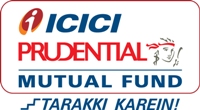Growth or Dividend Option of a mutual fund: Which is better

There are several misconceptions regarding Growth and Dividend options among some mutual fund investors and financial advisors. Some people say growth option is better while others think that, dividend option is better. One is not better than the other, they are simply different options. For the sake of new mutual fund investors let us briefly discuss what Growth and Dividend options are. Mutual funds give investors different pay-out options at the time of investment. There are mainly two pay-out options:-
Growth Option:
In growth option, the pay-out is made only at the time of redemption of units. The pay-out to the investor at the time of redemption is based on the Net Asset Value (NAV) and the number of units purchased by the investor. The profits made by the scheme from time to time, due to buying and selling securities or dividends from stocks (in equity schemes) or interest from bonds (in debt schemes), are re-invested in the scheme. The profit made by the scheme on re-invested profits is known in finance parlance as compounding. Over a long investment horizon growth option investors get higher returns due to the power of compounding.Dividend Option:
In dividend option, the pay-out to the investors is made from time to time, in addition to pay-out at the time of redemption. The interim payments made by the scheme are known as dividends. A mutual fund scheme may have multiple dividend options, e.g. annual, quarterly, monthly etc. Investors can choose a dividend option based on their financial needs. Dividends are declared on a per unit basis.
As per SEBI regulation, mutual funds may pay dividends only from the profits made by the scheme. Since dividends are paid from the NAV, the ex-dividend NAV of a scheme falls by the dividend amount. For example, if the NAV of a scheme is Rs 100 and the scheme declares Rs 5 dividend (per unit), the ex-dividend NAV will be Rs 95. Since profits are paid out to investors instead of being re-invested, the returns of dividend options are lower.
Investors should know that, dividends are paid entirely at the discretion of the fund managers of the scheme; there is no assurance either with respect to the amount or the timing of dividends. You will notice that, in severe bear market years, most equity funds usually do not pay dividends. Dividends paid by equity schemes are totally tax free. Dividends paid by debt schemes are tax free in the hands of the investor, but the fund house has to pay dividend distribution tax (DDT) at the rate of around 29%; so to that extent dividends received by debt fund investors are lower.
Let us now discuss some misconceptions related to growth and dividend options. Hopefully, we will be able to clarify these misconceptions for you.
Misconception 1:
The performance of growth option is better than dividend options.
Reality:
Our readers should know that growth and dividend options of a scheme invest in the same portfolio of securities. Since the underlying portfolio of growth and dividend options is the same, there cannot be any difference in performance on a cum-dividend basis. As explained earlier, since profits are re-invested in the scheme portfolio in growth option, investors benefit from the power of compounding, which they cannot in dividend option. Apart from the usual growth and dividend option, there is another option in mutual schemes, known as dividend re-investment option. Dividend re-investment is same as dividend option, except that the dividends paid out is re-invested to buy units of the scheme. The NAV of dividend re-investment option is same as dividend option, but the number of units owned by the investor goes up over a period of time. The returns of growth and dividend re-investment optionare nearly the same.
Misconception 2:
Dividend option is safer than growth option.
Reality:
Some people argue that, since profits are paid out instead of being re-invested, dividend option is safer. There is only partial truth in this argument. In a bear market, the fall in NAV of growth and dividend option is the same. However, since NAV of dividend option is lower than growth option, the absolute notional loss is lower in dividend option. Instead of looking only at bear market performance, investors should look at combined bull and bear market cycles. The returns of growth option in bull market will be higher due to compounding effect and over a long investment horizon growth option will almost certainly give higher returns than dividend option.
However, if you have short investment horizon, then you can invest in dividend option, so that you receive some cash-flows in the interim which will serve as some kind of protection to downside risks (if any) at the time of redemption. Some mutual fund schemes like ELSS (tax saver funds) have lock-in periods, during which you cannot exit the scheme. If you want to redeem immediately after the lock-in period for any reasons (e.g. you may retire from your job at the end of the lock-in period and will need the money) and fear of a bear market at that time, then dividend option is probably the better option. Similarly, when investing in thematic or sector funds, whose fortunes may change at the end of the business cycle, financial advisors recommend dividend option, so that you make hay when the times are good; timing is always very difficult in equity investments.
Misconception 3:
Mutual fund dividends are paid from stock dividends. Mutual funds which pay high dividends therefore have high dividend yield stocks in their portfolio and hence are better investments than low dividend paying funds.
Reality:
Dividends are paid from profits made by the scheme. Stock dividend is just one of the sources of profits. Fund managers also make profits through portfolio churn (buying and selling securities). It is wrong to assume that, mutual fund paying high dividends invest more in high dividend yield stocks. A fund manager can pay high dividends to investors by also churning the portfolio more.
When fund managers are concerned about valuations, they book profits and sit on cash (increase the cash allocation of their scheme portfolios). The fund managers also rotate sectors from time to time, based on relative attractiveness of sectors from an investment perspective; this may result in profit generation. These profits may be passed to investors in the form of dividends. For growth option investors in such schemes, the profits are retained in the scheme but in cash allocation. To know, whether the fund manager prefers to invest in high dividend yield stocks, you should read the investment objective of the fund. Some schemes explicitly mention if they invest in high dividend yield stocks. High dividends may not be indicative of the long term investment strategy of the fund manager; it may simply be a result of market conditions.
Misconception 4:
Low dividend paying funds grow faster than high dividend paying funds because they invest in growth stocks.
Reality:
As discussed earlier, dividend pay-out rate is not necessarily indicative of the long term investment strategy of the fund manager. Low dividend paying funds may invest in value stocks; high dividend yield is one of the characteristics of value stocks. A growth fund may pay higher dividends in bull markets, because buoyed by faster EPS growth, valuations may run up faster for growth stocks in bull market conditions, fund managers may want to book profits (and pass them to investors as dividends).
I have noticed a theme in Indian media (print, electronic and digital); there is a tendency either towards over-simplification (and also over-complication) of certain narratives, not just related to investments but various other spheres. People make simplistic conclusion based on some basic observations. It is not that simple; sometimes you need to put in a little bit of effort to understand the reasons behind a phenomenon. On the other hand, you should not also, over-complicate things. Simple things like reading the scheme prospectus or the scheme information document can reveal more useful information than trying to quick but smart analysis of data, which we do not fully understand.
Misconception 5:
Dividend option in mutual will help investors book a loss to reduce / avoid short term capital gains tax.
Reality:
This was a prevalent practice few years back for some investors who had short term capital gains. Back then, some investors, who had made short term capital gains (investment period of less than one year) either in shares or mutual funds, would invest in the dividend option of a mutual fund scheme just before the dividend was announced. As mentioned earlier, dividends are tax free for investors. We also discussed that, since dividends are paid from the NAV, the NAV will fall immediately after the dividend is declared. If the person invested just before a large dividend is declared, he / she will make a loss from a tax perspective (short term capital gains). The investor will immediately book the loss (before the NAV rises) and set off this short term loss in his / her Income Tax return against the short term capital gains made in shares or mutual funds. This practice was known as dividend stripping of short term capital gains.
You should know that, to prevent tax avoidance through dividend stripping, appropriate changes have been made to Income Tax Act. Capital loss set off is not allowed, if investment was made within 3 months of dividend record date or redemption was made within 9 months of the dividend record date. Investors who do not abide by the rules under Income Tax Act for dividend stripping may be subject to enquiry by the Income Tax Department.
Conclusion
Income tax rules with respect to dividend stripping notwithstanding, tax considerations may still inform your choice of option. For example, if you are investing in an Arbitrage Fund (arbitrage fund is treated as an equity fund for tax purposes) for a period of less than one year, dividend or dividend re-investment option is more tax efficient than growth option. Similarly, if you are investing in debt fund for a period of less than 3 years, dividend or dividend re-investment option (depending on your cash-flow needs), is more tax efficient, if you are in the highest tax bracket.
Tax aside, the most important consideration for investing in growth versus dividend option, should be your financial goals. If your goal is wealth creation, then growth option is best for you. Growth option is suitable for younger investors and investors who have regular income from profession or other sources. For retired people / senior citizens, who need regular cash-flows, dividend option may be more appropriate. There are a few other situations, which have discussed in this post, where one option may be more suitable than the other. You should consult with your financial advisor, regarding which mutual fund option is more suitable for you.
Mutual Fund Investments are subject to market risk, read all scheme related documents carefully.
RECOMMENDED READS
LATEST ARTICLES
- Why you need to have hybrid mutual funds in your portfolio: Different types of funds Part 2
- Why you need to have hybrid mutual funds in your portfolio: Misconceptions Part 1
- Which is the best time to invest in mutual funds
- Economic slowdown: Is it real and what should you do
- Importance of liquidity in investing: Mutual funds are ideal solutions
An Investor Education Initiative by ICICI Prudential Mutual Fund to help you make informed investment decisions.
Quick Links
Follow ICICI Pru MF
More About ICICI Pru MF
POST A QUERY




